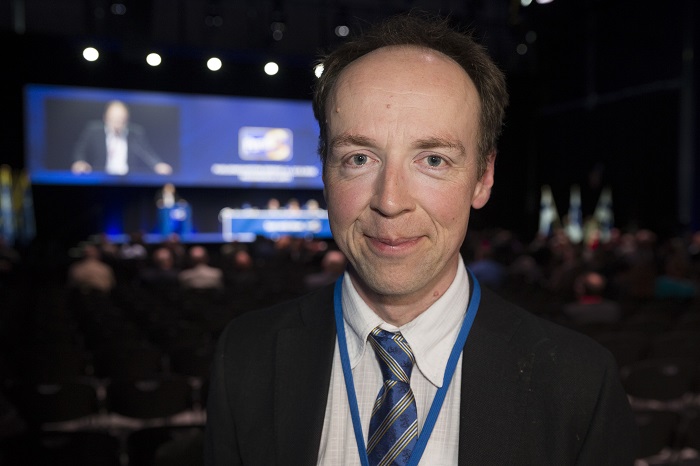Govt escapes dissolution
High drama teaches all to choose allies with care
Published : 13 Jun 2017, 01:09
Updated : 14 Jun 2017, 11:41
The 3-party coalition government has managed to return from the brink of a near-certain collapse, as a group of MPs seceded from the Jussi Halla-aho-led Perussuomalaiset (Finns Party) and vowed to support the ruling coalition led by Suomen Keskusta (Centre Party).
By Tuesday night, 22 of the 37-member parliamentary caucus of the Perussuomalaiset, including the parliament speaker, Maria Lohela, left the populist party and 20 of them also launched a new political group called the New Alternative. The ruling coalition now comprises the Keskusta, the Kansallinen Kokoomus (National Coalition Party-NCP) and the New Alternative.
Sampo Terho, minister for culture and European affairs, represents the New Alternative in the “leading trio” of the coalition. He told the media on Tuesday night that the breakaway group is likely to launch a new political party.
Under the changed circumstances, Prime Minister Sipilä, also the chairman of the Keskusta, concluded on late Tuesday that the government could continue without changes and claimed the crisis was over.
The crisis began on Monday morning as Sipilä met with the newly elected Perussuomalaiset chairman, Halla-aho and the Kokoomus Chairman and Finance Minister Petteri Orpo. Both Sipilä and Orpo said their values were too far from Halla-aho to continue with the alliance.
Sipilä was going to submit a formal resignation to President Sauli Niinistö on Tuesday afternoon when, at the eleventh hour, he heard about the secession and came to the new decision.
Sipilä told the media in Turku, near the Presidential Summer Palace in southwestern Finland, that according to legal authorities it was not necessary to resolve the government and reappoint the ministers.
The transitional period will culminate in a vote of confidence in parliament for the cabinet. Sipilä on Tuesday evening said the vote will be held in a few days, depending on parliamen’s business schedule.
With the support from the defected group, the cabinet will have the backing of at least 106 MPs out of the 200-member parliament.
Both Keskusta and Kokoomus decided against continuing with the alliance with the Finns following last Saturday’s change in its leadership. The Finns on June 10 elected Halla-aho as its chairman, replacing Timo Soini who had steered the party for about two decades. Halla-aho is widely criticised for his extreme rightist views and hate speeches against immigrants. Even in his maiden speech as the Finns Party chief, he declared to lead the party towards a more nationalistic and more euro-sceptic direction.
The Centre Party and the NCP feel having such an extremely rightist party and its leader as their ally would not only be embarrassing for them but also damaging to the image of Finland abroad, and ultimately a deterrent to the country’s development.
Sipilä and the then Kokoomus chairman Alexander Stubb formed the alliance with the Perussuomalaiset in early 2015, taking into account the fact that Timo Soini, the outgoing leader of the Finns, is a reasonable political leader. But that act, deemed by many as a kind giving recognition to the extreme right nationalist force, did finally pushed the country in this tight spot.
When Sipilä as the chief of the majority party in parliament held negotiations with other political parties in April to May 2015, most of the progressive, pro-immigrant groups refused straightway to join a government with the Perussuomalaiset in it. Vihreäliitto (Green League) Chair Ville Niinistö said the Greens have difficulties in fitting in a government with the Perussuomalaiset as a partner. After the meeting with Sipilä, Ville Niinistö said the Greens and the Finns have different positions on human rights issues and the climate policy, among many other things.
Asked how it was possible to accommodate the Perussuomalaiset’s stance on immigration, Sipilä said at the time of coalition formation all of its components, including the Kokoomusas, had agreed to keep the Finnish borders open to asylum seekers and refugees. Sipilä also emphasised that his party supports work-based immigration. Soini, too, expressed the view that Finland should be an open country to immigrants, despite his party’s negative attitude on the issue.
Sipilä, a politician coming from a business background, finally preferred to form government with the Perussuomalaiset, instead of allying with the progressive but comparatively smaller parties. Until now, he also had not faced any difficulties after Orpo replaced Stubb as the Kokoomus chairman.
But now, the prime minister is forced to cut all ties with the Finns in the context of the overall global situation, including that of the European Union, especially when the EU is under pressure from England’s Brexit move and, most importantly, the interests of Finland. As the rate of death in the country is still lower than that of birth, Finland has no justification for throttling immigration. Rather, it should allow controlled immigration to ensure a steady workforce.
According to Statistics Finland, in January to March 2017 a total of 14,370 people died in the country, compared to 12,118 births. Under the circumstances, an anti-immigrant and euro-sceptic policy is nothing but a suicidal drive.
On the other hand, the decision to break the bond with the Halla-aho-led Perussuomalaiset also may pose a new challenge to Sipila-led government of handling the Perussuomalaiset, which in the opposition is likely to be more vociferous and arrogant, making the right-left divide in the Finnish politics wider and deeper.
The morale of the ongoing high-tension drama is that one should choose one’s companions carefully, for, as in the case of an individual, a party’s image and conduct depend to a great extent on what companions it keeps. Rather than focusing solely on immediate goals like coming to power, the parties should consider well the long-term impacts and ramifications when choosing its allies, as they can both make and break it to a certain extent. And political analysts hope the parties would learn from this near disaster.


